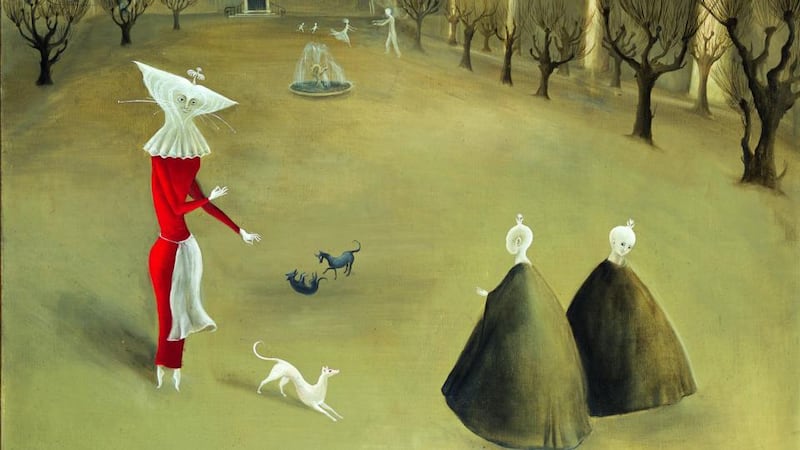Shortly before Christmas 1907, this newspaper’s social column carried a short item noting that the marriage arranged between one Harold Carrington, of Preston, and Marie, daughter of a Dr Moorhead from Moate, Co Westmeath, “will take place quietly in January”.
A month later, a follow-up recorded the wedding had taken place, in Moate, “by special dispensation”. Thereafter, the archive falls silent on the matter. The Carrington- Moorhead alliance disappears, apparently without trace.
At their stately home in England, meanwhile, the happy couple would go on to have four children including, in 1917, a daughter named Leonora – nicknamed “Prim” in family circles – who would subsequently merit occasional mention in her own right in these pages.

Leonora inherited the beauty for which her mother was renowned. And partly thanks to an Irish nanny, who filled her head with stories from the old country, she absorbed some of the culture. This may or may not have contributed to a rebellious streak she never lost.
She was expelled from two English convent schools (her mother was a strict Catholic), the nuns conceding defeat in attempts to make her a lady. She was unimpressed when presented at Buckingham Palace. And in the Royal enclosure at Ascot, disgusted that women couldn’t place bets, she spent the time reading an Aldous Huxley novel. Determined to be an artist, Carrington had first to face down her father, who wanted her to be anything but. He warned she would die penniless in a garret, as artists did. Her mother, by contrast, encouraged the ambition and prevailed.
The young Leonora studied in Florence and Chelsea. But her vocation was sealed, arguably, when her mother gave her a book about Surrealism. It had a picture by Max Ernst on the cover. Soon afterwards, she attended a full Ernst exhibition. So by the time they met in person, at a dinner party in 1936, she may have been predisposed to fall for the painter. In any case, the feeling proved mutual.
She and Ernst lived together for a time in Paris, mixing with Man Ray, Dalí, Picasso, and Miró. Carrington had all the qualifications to be a muse, except subservience. When Miró gave her money to get him cigarettes once, she gave it back and told him “he could bloody well get them himself”.
She painted her own first fully surrealist picture in 1939. Then the war came, and with it an irretrievable break from Ernst. He had to flee the Nazis, to the US. She fled too: first to Spain and Portugal. In the process, she suffered a nervous collapse, which caused her to be incarcerated and treated with some very dubious drugs.
She escaped Europe, eventually, to Mexico, where she found not just refuge but a spiritual home. Helped by a diplomat from that country, she married him into the bargain. When they divorced, amicably, she married another Mexican. After that, her life and art settled into a less turbulent pattern, which lasted until she died, aged 94, in 2011.
In the long intervening period, it wasn't just The Irish Times social column that lost track of her. Her career was little known this side of the Atlantic, generally. Insofar as it featured at all, it was more often than not for her books.
By contrast, her paintings turned her into a Mexican national treasure, more famous than Kahlo. One measure of her reputation there is that in 2008, the capital city hosted a months-long open-air exhibition of her sculptures. She has also been a success in the US. In purely commercial terms, her pictures (which include at least one set in Moate, Grandmother Moorhead's Aromatic Kitchen) can fetch more than $1 million.
She was belatedly exhibited in London in 1991, and again just before she died. Now it’s the turn of her mother’s country to see the work up close. A first Irish exhibition of Carrington – rebranded as “the Celtic Surrealist” – will open at Imma later this month.
But returning, finally, to the subject of her long estrangement from these islands, there is an amusing footnote provided by an English journalist Joanna Moorhead – the artist’s cousin – who tracked her down in Mexico in 2006.
Even the family knew nothing about her life after the 1930s. But they still called her “Prim”, a name the nuns would have approved. It was as this – complete with a question mark – that the English journalist first addressed her in Mexico, to be quickly corrected. “Leonora, if you don’t mind,” said the then 93-year-old. “I left Prim behind a long time ago”.
fmcnally@irishtimes.com








